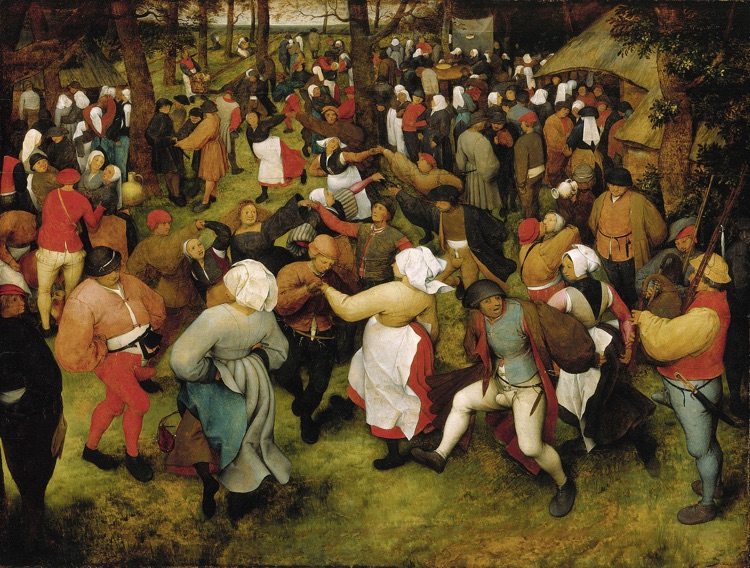Game Writing and the Picaresque
At ICIDS, Sarah Baylus gave a fascinating keynote about her writing team’s work on Divinity: Original Sin 2. This is a new D&D-descended adventure which features more than a million words of complex, branching dialogue with myriad characters you might encounter in the game world. You meet a character, ask questions, and various quests or puzzles may fall out in consequence.
The characters she described — and characters familiar from similar games — tend to be vivid and singular. They present themselves with one or two singular oddities — deformities, really — that cannot be mistaken and that stick in the mind. This addresses several basic design forces:
- Most of the characters will only be encountered once; we must keep description tight and we must avoid blurring all the encounters into a muddy mixture.
- Vivid encounters encourage retelling, which sells games.
- People don’t buy video games to read walls of text.
This recalls, in my mind, Bruegel’s peasants and Hogarth’s street scenes — and perhaps a bit of Bosch, too. We don’t want the little people to fade too far into the landscape, so we give each one their own absurdity.

One of Baylus’s examples, for example, deals with an encounter with a shepherd whose flock has been pilfered. She warns you:
If you’ve go a favorite sheep, best to fry’er up now ’fore she gets thieved in the night like my dear plump Hoggett — the finest in my herd!
1. Tell me about yourself.
2. Where’s your herd?
3. About your stolen sheep…
4. I’ll take my leave.
I’m not entirely wild about frying up one’s favorite sheep. Unless plump Hoggett was actually as lamb, I’d expect a slow braise would be more to the point, which a few bits saved for roasting. I’m also doubtful that this shepherd, who takes the time to assign a gender to her dear Hoggett, would have called her a sheep and not a ewe. The people we meet speak dialect, but we ourselves don’t. Who takes their leave, outside Jane Austen?
The underlying problem here, I think, is that we have too big a cast and too little to do with any character who isn’t The Boss. It’s one thing to write a Parsifal where we come to town, blow stuff up, and then ride on: you don’t need to retain state because you’ll be gone in the morning, but everyone has to be very different or all the towns will be alike.
A second problem, of course, is that Baylus’s studio had to develop its own hypertext system to represent the branching dialogue, and that tool seems to have been invented without reference to anything we’ve done in the research community. There’s nothing specifically targeting the problem, but of course all the sculptural hypertext work is relevant, all the chatbot work might be relevant, and you could surely find some good ideas in the Façade/Prom Week lineage, too. I’d have liked to have seen more detail what they did create, and hear more about how it worked.